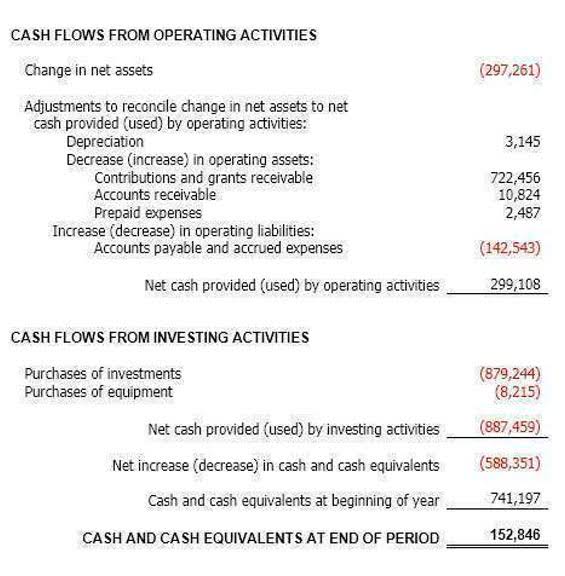Strategic Approaches to Cash Flow Management Regions Bank
Posted on: 17 Gennaio 2022, by : Mimosa International
The business will have a positive cash flow if there’s more in the account at the end of the period than when the period began; it will have a negative cash flow if there’s less cash at the end. Financing cash flow can impact a company’s cash position and its ability to fund operations and growth. Financing cash flow involves cash transactions between a business and its owners, investors, and creditors. Examples include issuing or repurchasing shares, borrowing funds, and repaying loans. A positive investing cash flow signifies that a cash flow management strategies for small business business is disposing of its long-term assets, while a negative investing cash flow indicates that a company is investing in its future growth.

Manage Receivables and Payables Efficiently

Effective cash flow management allows businesses to navigate through economic downturns and unstable market conditions. Long-term financing is a better option than working capital when you’re investing in major purchases such as manufacturing equipment, real estate, etc. You can space payments and depreciation over the life of the asset, and while you’ll need to keep an eye on interest rates, your cash position will be much stronger. By understanding cash flow management early on, you can develop strategies that not only secure your financial position but also provide peace of mind for you and your team.
Reassess your business model
By implementing these controls, organizations can minimize the risk of financial mismanagement and ensure that funds are allocated appropriately. Nonprofits should develop detailed budgets that reflect both expected income and expenses over a specific period. The bank also has another loan product, called Working Capital Facility, which unlocks cash tied up in receivables – like Stream – but also in inventory. Scoro helps agencies streamline cash flow management by automating invoicing, tracking revenue, and optimizing expenses—all in one place. For instance, project-based work tends to revolve around one-off invoices and one-time customers, which can lead to ebbs and flows in revenue. But retainers provide consistent monthly income accounting and ongoing relationships, which contribute to steady cash flow.

Q: Should I have a separate bank account just for taxes?
With the latest integrated payables workflow and electronic payment capabilities, you can heighten visibility, improve real-time data availability, and strengthen controls at reduced transaction costs. Inventory management is another key factor in healthy cash flow management. Overstocking can tie up cash unnecessarily, whereas keeping an ideal level of stock allows for faster sales and replenishments without straining cash resources.

Pre-money valuation explained: What your startup needs to know
The first step in managing cash flow is through understanding your current cash flow. Without truly understanding your numbers, you are essentially setting yourself up for failure. In addition, being on top of your finances will give you a big-picture overview of where your company is at and where it is going.
Optimize Invoice Terms
This approach reduces the risk of losing a substantial portion of your monthly revenue if a major client leaves. Instead of depending on a few big clients to pay the bills, take on a larger number of smaller clients to diversify your client base. Once you send partial invoices, you can see the percentage invoiced in the “Quotes” view. With this approach, you bring in revenue throughout the project—you don’t have to wait for a lump sum at the end. This way, you get a more accurate picture of how much work your team is doing each month—and how much you’re really bringing in.
The cash collection activity focuses on the timely and efficient collection of cash from customers and clients. It involves establishing clear credit terms, sending accurate and prompt invoices, and implementing effective collection processes. Ensuring timely payments can improve your cash flow and minimise the risk of bad debts.
- Importantly, it’s quick and efficient for businesses to manage their use of the facility.
- They let you schedule payments, automate recurring ones, and track transactions in real time.
- Your income streams are very well dependent on the market and economy.
- Although balancing growth capital and working capital can be difficult when working with thin profit margins, Shvarts said it’s important to maintain a rainy-day reserve.
- Imagine your farm thriving like never before, with tailored strategies that turn challenges into clear, actionable steps.
- Several factors contribute to cash flow problems in nonprofits, and understanding these causes is essential for effective management.
How can businesses use cash flow forecasting as part of their cash flow management process?
- A customer loyalty program or referral incentives can drive repeat business.
- But retainers provide consistent monthly income and ongoing relationships, which contribute to steady cash flow.
- By maintaining an optimum cash balance, businesses can meet payment deadlines, avoid bankruptcy, and maximize liquidity.
- Automated software can simplify cash forecasting and track your revenue, expenses, and accounts receivable automatically.
- Set reminders for recurring payments and schedule a weekly review of your bank balance, accounts receivable, and accounts payable.
Cash burn is a key financial indicator that directly influences strategic decisions and your company’s ability to raise funds. This budget should be revisited regularly to adjust for any changes in funding or operational needs. Additionally, organizations should consider using zero-based budgeting, where every expense must be justified for each new period, rather than simply adjusting previous budgets. This approach encourages careful scrutiny of all expenditures and helps identify areas where costs can HVAC Bookkeeping be reduced or eliminated. By recognizing these dynamics, nonprofit leaders can take proactive steps to mitigate cash flow issues and ensure their organizations remain financially healthy.
Cash flow management acts as the lifeblood of any business, fueling daily operations and aspirations alike. Understanding cash flow isn’t just a skill, but something that’s absolutely vital to the financial health of any business. This article will explain what cash flow management is, why it is important, and how to manage cash flow and share some actionable strategies and real-world case studies. Set aside a portion of profits regularly to build a cushion for unexpected expenses, economic downturns, or seasonal fluctuations. A cash reserve provides a safety net and ensures that the business can meet its financial obligations even during challenging times. It’s important to have detailed budgets and curb unnecessary spending.